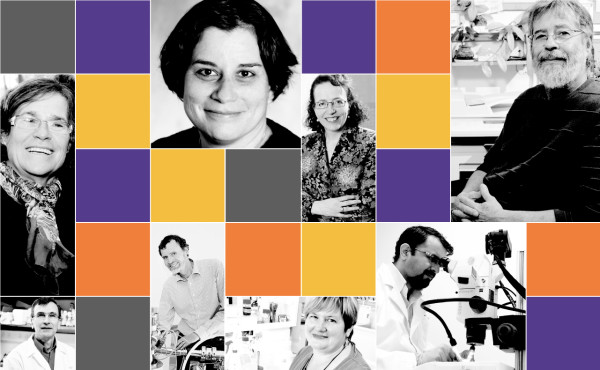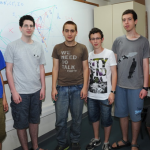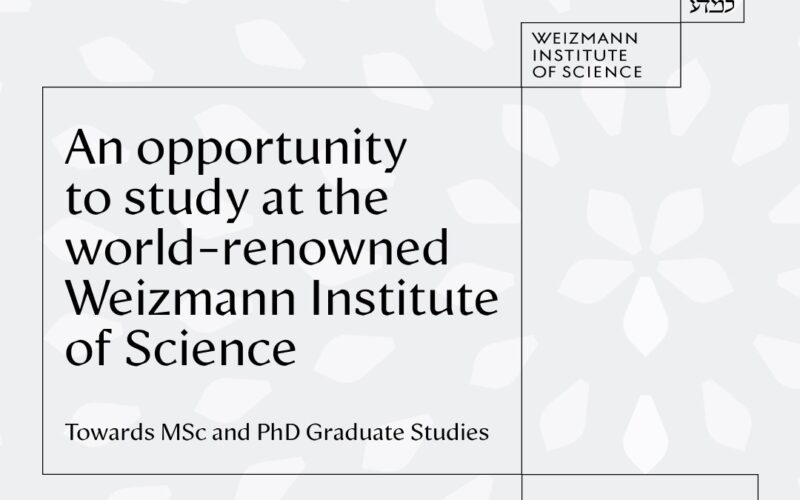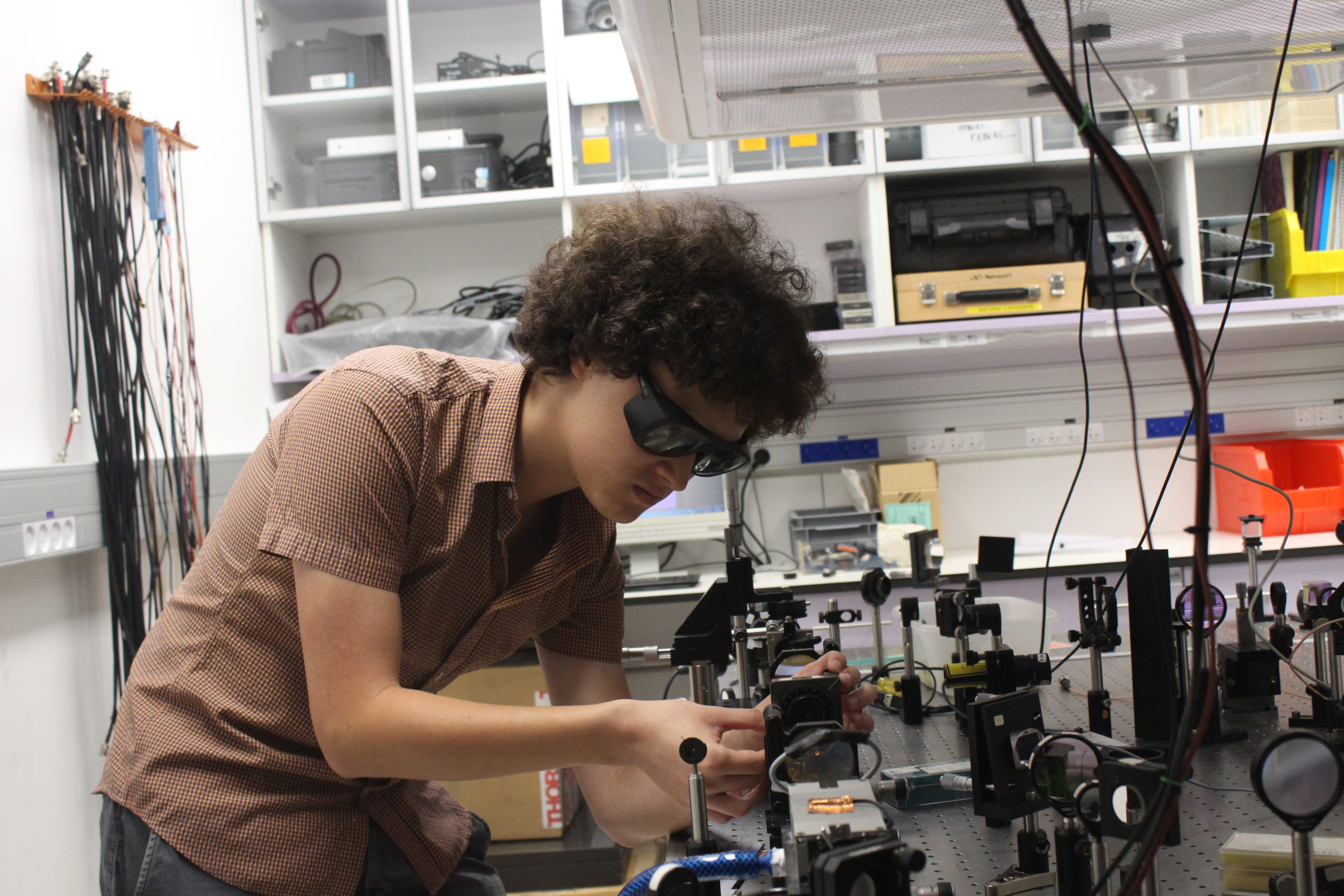
September 30, 2013
Drug resistance, diabetes, epilepsy and protein behaviour research are set to benefit from grants worth over $(A) 0.5 million awarded by Weizmann Australia. Funded by Australian philanthropists, Weizmann Australia has established four major joint research projects between scientists at the Weizmann Institute of Science (WIS) Israel and scientists at Sydney, Flinders, Melbourne and Australian National Universities.
Announced today by Weizmann Australia’s Chairman, Stephen Chipkin, the $70,000 annual grants over two years for each project, are a key part of Weizmann Australia’s goal to link Australian and Israeli scientific expertise.
“The Weizmann Institute is not publicly well known in Australia but it is well recognised by international scientists as one of the world’s great science research institutes. It has a wealth of knowledge to be shared, which is why these grants were created,” he said.
“Overall the purpose of this program is to facilitate scientific collaboration between the Weizmann Institute of Science and Australian scientists by providing seed funds to initiate or strengthen existing research ties. This will be good for Australian science and it will further strengthen the links between the two countries. If the research leads to significant scientific breakthroughs, all of humanity will benefit.”
These four projects are varied and at the cutting edge of scientific research – here is some more about them.
WIS & UNIVERSITY OF SYDNEY
The WIS/University of Sydney project focuses on understanding pancreatic molecules to help improve diabetes therapies. Pancreatic beta cells play a leading role in regulating our body’s metabolism through their unique ability to synthesise and secrete the hormone insulin, in response to increasing concentrations of glucose. Inadequate beta cell mass or beta cell dysfunction are major denominators of diabetes. This research aims to define the role of specific molecules called “micro Ribonucleic Acids” (microRNAs /miRNAs) in pancreatic beta cells dysfunction. This will allow scientists to understand the role of these microRNAs in development as well as treatment of diabetes.
According to A/Prof Anand Hardikar, who leads the research team at the NHMRC Clinical Trials Centre at the University of Sydney, although it is well understood that miRNA’s play a central role in several biological activities, from embryonic development to cell death, the mechanism by which microRNAs may influence development of diabetes are not.
“Understanding how two specific RNA’s- miR-375 and miR-34a, are expressed in pancreatic cells is a key focus of our research and to determine their regulation by metabolic factors such as insulin, glucose and fatty acids,” he said.
The Israeli team lead by Prof Michael Walker at WIS will focus on the characterisation, control and development of these molecules and the Australian team will address their regulation.
“Together these approaches will provide a better understanding of how miRNAs control beta cell development and function. They may also generate novel insights into the development of beta cell dysfunction which may lead to new approaches to diabetes therapy,” said Prof Walker.
WIS & FLINDERS
The WIS/Flinders University program will look at how insights into drug resistance can improve disease treatment. Not all drugs are effective as infectious bacteria can use pumps to block treatment causing multidrug resistance (Mdr) which is a serious threat to human health. The Flinders and WIS research aims to deconstruct these blocks by studying the role of Mdr pumps which play a significant role in antibiotic resistance, for example.
According to Prof Melissa Brown who leads the Flinders team, multidrug pumps in the cell membrane are able to remove a range of introduced drugs from the cell before they can act – a serious obstacle to treating many cancers and infectious diseases.
“Our collaborative research into these fascinating complex proteins will hopefully yield results with clinical relevance, a prerequisite for the design of effective antibiotics able to overcome them as well as intriguing insights into the unusual mechanisms that make them so effective,” she said.
Prof Brown’s research partner in Israel, Prof Eitan Bibi added: “In addition to their clinical importance, these pumps are of interest due to their intriguing mechanical characteristics that differ substantially from those of chemically specific transport systems. Our collaborative research program will help us better understand the differences between certain groups of multidrug pumps and how they evolved.”
Overall the multidrug transporters being studied, although prevalent in bacteria, are less characterised by scientists than other transport mechanisms and are therefore not as well understood. This research aims to shed light on an important aspect of multidrug transport.
WIS & UNIVERSITY OF MELBOURNE
The research of the WIS/University of Melbourne collaboration will focus on epilepsy and a new gene that could help improve understanding about seizures and therapies. Following the recent discovery of a gene called HNRNPU from a study of 500 children and adults with severe epilepsies, the University of Melbourne /WIS research project aims to investigate how the gene, once mutated, influences brain development.
Discovered by Professor Ingrid Scheffer’s team at the Florey Institute, University of Melbourne and United States collaborators at the University of Washington, the new gene is opening doors in epilepsy research.
“This form of epilepsy develops during early childhood so understanding the effects of this gene mutation on the brain in early development is important. In this research the gene will be studied in early postnatal mice in a bid to understand how it works,” said Professor Scheffer.
Professor Scheffer’s WIS research partner Prof Orly Reiner said the research is significant for epilepsy.
“Epilepsy is one of the most common neurological disorders with severe impacts for the patient, particularly if seizures are frequent. Understanding the effects of this gene on brain development will help improve our knowledge of how and why seizures occur and their impact on development and ultimately pinpoint the best time to introduce therapy to a patient,” said Prof Reiner.
WIS & ANU
The Australian National University (ANU) and WIS project is observing protein behaviour to help improve drug targeting. According to Professor Gottfried Otting at ANU, measuring and visualising changes that large protein molecules undergo as they perform their biological functions are key objectives of this project that could ultimately improve drug target analysis.
“As atoms and molecules are so small, to see these proteins at work we tag them with molecules that can be seen using electron paramagnetic resonance (EPR) spectroscopy, which is the best physical method to accurately measure the distance between tags on a nano scale and the variability of these distances,” he said.
Prof Otting, who has cutting-edge expertise in attaching suitable tag molecules to proteins will work with Prof Daniella Goldfarb at WIS, who in turn has built one of the most sensitive EPR spectrometers in the world, to take these measurements.
“We will conduct spectroscopic measurements to determine the distance between two specific sites in a protein, each labeled with a specific tag. Such measurements will enable us to track changes in the protein structure as it interacts with another protein or a chemical interfering with its function,” said Prof Goldfarb.
‘Seeing’ protein molecules at work is an age-old dream of biochemists and biophysicists and the team has been working on realising this dream for the past three years. Now they say they are ready to tackle problems of biological significance.
“Ultimately as proteins depend on mobility to perform their biological functions, knowing how they work will ultimately help improve the characterisation of drug targets,” said Prof Goldfarb.
Readers will be kept up to date with research developments as these projects progress.
If you would like to know more about Weizmann Australia’s Making Connections Program, please get in touch with Marisa.
Marisa Hoffenberg
Executive Director
M: 0416538227






